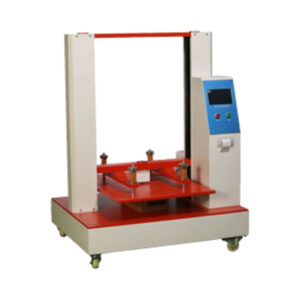Le Testeur de résistance à l'éclatement is an essential tool for evaluating the structural integrity and durability of paper and paperboard materials. Designed to assess the maximum force these materials can withstand before rupturing, this tester is widely used in packaging, manufacturing, and quality control settings. With applications ranging from light paper to heavy-duty board, the Testeur de résistance à l'éclatement ensures that materials meet rigorous standards for performance under stress, making it indispensable in industries where strength and durability are paramount.
Applications of the Bursting Strength Tester
Bursting strength testing measures a material’s ability to withstand breaking or bursting when subjected to external forces. This quality is critical for paper, board, and packaging materials, particularly in the context of shipping and storage. By identifying weak points before materials are deployed, companies can avoid costly damages and ensure safe product transport. For manufacturers, this test provides insights into material quality and informs packaging design, allowing for improved durability and reduced risk of damage during transit.
Key Features of the Bursting Strength Tester
- Hydraulic Pressure Testing: The tester uses hydraulic pressure to apply force to the test sample, allowing for highly accurate measurement of burst resistance.
- Wide Testing Range: It can test a broad spectrum of materials, from light papers to solid fiberboards, with bursting strengths ranging from 70 kPa to 5500 kPa.
- Precision and Reliability: Equipped with advanced pressure sensors, the Bursting Strength Tester delivers reliable, repeatable results, ensuring high precision in quality control.
Board Bursting Tester: Ensuring Structural Strength for Boards
Le BNP-01 Board Bursting Tester is specifically designed for testing board materials like corrugated and solid fiberboard. Capable of measuring materials with bursting strengths within the range of 350 kPa to 5500 kPa, this tester meets the demanding needs of the packaging and transportation sectors. By evaluating the material’s resilience, it enables manufacturers to guarantee that their packaging materials can withstand the pressures encountered during handling and shipping. This tester is compliant with leading industry standards, including:
- ISO 2759: Internationally recognized for assessing board strength, ISO 2759 establishes guidelines for evaluating bursting resistance in board materials, ensuring global quality compliance.
- TAPPI T810 and TAPPI T807: These standards cover burst testing for fiberboard and corrugated board, enabling consistent quality across batches and ensuring packaging materials are safe for transit.
Paper Bursting Tester: Optimized for Lightweight Materials
For paper applications, the ZNP-01 Paper Bursting Tester is the ideal choice, testing materials with bursting strengths ranging from 70 kPa to 1400 kPa. Suitable for lighter materials like paper and thin cardboard, this tester is instrumental in applications where material flexibility is crucial. The ZNP-01 is compliant with standards such as:
- ISO 2758: This standard governs bursting strength testing for paper materials, ensuring results meet international benchmarks.
- TAPPI T403 and ASTM D774: Both standards outline methods for evaluating paper strength, with ASTM D774 focusing on lightweight, high-resilience papers.
These standards ensure that the materials used in packaging and print applications meet the required durability for product safety and quality assurance.
Principe du test
The bursting strength test involves placing a sample over a circular, elastic diaphragm that is rigidly clamped at its edges but free to bulge in the center. As hydraulic fluid is pumped at a constant rate, the diaphragm inflates until the test sample ruptures. The tester records the maximum pressure reached at rupture, which indicates the material’s bursting strength. This test method is highly accurate, allowing manufacturers to consistently assess the strength and quality of various materials.
Benefits of Using a Bursting Strength Tester
- Quality Assurance for Packaging: The tester ensures packaging materials can withstand the stresses of shipping and handling, reducing the risk of damage.
- Consistent Production Standards: With regular testing, manufacturers can maintain uniform quality and promptly address any issues with material performance.
- Adaptability Across Industries: This tester is suitable for a wide array of sectors, including medical devices, electronics, textiles, packaging, and food, where durable materials are a critical requirement.
Questions fréquemment posées (FAQ)
- What is the purpose of a bursting strength test?
This test assesses the durability of paper and board materials by determining the maximum force they can resist before breaking. It is essential for quality control in packaging and material manufacturing. - How does the Bursting Strength Tester measure material strength?
The tester applies hydraulic pressure to the sample until it ruptures, and the maximum pressure is recorded as the material’s bursting strength. - What types of materials can be tested?
This tester can assess a wide range of materials, including lightweight paper, thick cardboard, corrugated board, and fiberboard. - Why is ISO 2759 important in bursting strength testing?
ISO 2759 is a global standard that ensures materials meet consistent quality benchmarks, which is critical for international manufacturers and suppliers. - How frequently should packaging materials undergo bursting strength testing?
Regular testing is recommended, particularly when changes occur in material sourcing or production processes, to maintain reliable quality standards.





